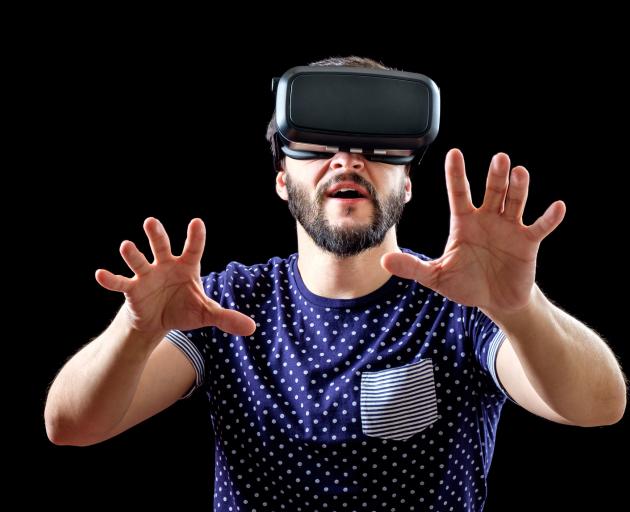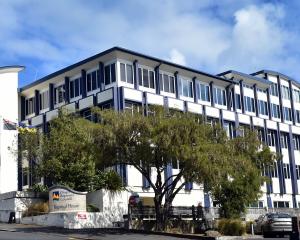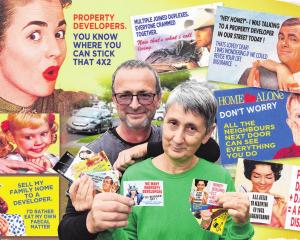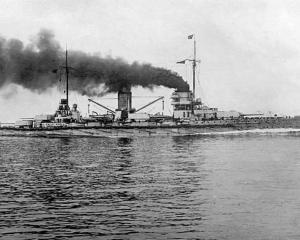
New Zealand has a unique opportunity to create business from virtual and augmented reality technology, and we could be leading this from Dunedin.
Virtual reality (VR) is immersion into a totally digital, three-dimensional environment. Augmented reality (AR) is where the view of a physical, real-world environment is augmented or supplemented by overlaid computer-generated visuals.
Experienced through a head-mounted display for instance, it places images of both the physical world and virtual objects in the user's field of view, allowing them to see and actually experience something, as if it were real, projected into their actual environment.
The spectrum between virtual and augmented reality is also often referred to as mixed reality (MR).
Mixed reality has the potential to revolutionise the way we receive and interact with digital information, but there is a lot of research and development to be done to make it relevant and useful. This is where New Zealand's potential lies.
AR-like technologies are already used in computer games, like Pokemon Go, or for advertising purposes like augmented IKEA furniture catalogues.
However, only prototypical or demonstration systems have been developed for more ''serious'' application areas, like for instance AR-based training for surgeons. These are not yet productive systems at market scale.
Simply turning everything into a game - gamification - as now happens, just isn't going to be enough to make MR a useful mainstream technology. It has to take into account what actually happens in practice, to relate to real roles and tasks in the workplace with the right language and setting. It has to be meaningful and relevant.
We have to find a way of merging present and virtual worlds sufficiently, so that a surgeon, for instance, can view both something instructional from computational headwear while still looking at a real-world operating theatre.
So far, we have seen what the researchers and developers think might work. Now is the time to turn the tables and for stakeholders to start setting the direction and telling us what they need.
This is where we, as Dunedin researchers and businesspeople, can step up and help - there is a niche for New Zealand research and development to find specific solutions for specific issues.
We are never going to be big. We can't replicate Japan's investment and superior technological process, nor Europe's expertise and funding landscape. And our inventions won't be flowing on from investment into military technology, as they do in the United States.
But New Zealanders don't need to do what everyone else is doing; we can take the lead to move beyond the current game-orientated environment. We don't have to be super-competitive, we have to be clever. There is a very real potential to use mixed reality as a force for relevant and meaningful applications.
We should collaborate effectively, building town-gown relationships, incorporating potential businesses' customers, small and medium IT enterprises, research institutes, community groups, end users, and other stakeholders.
Dunedin is well-placed to head such niche development. It already attracts smart and innovative people and it is good at collaboration. Otago University's information science department has the country's leading augmented and virtual reality experts, who are well connected internationally. Dunedin IT companies are innovative and agile.
Let's build on those foundations.
- Education is crucial - we need our students at all levels learning about technology such as virtual and augmented reality.
- We need to identify the workplace problems that technology can improve. And we need to collaborate on potential solutions.
- We need to develop technology further. Some of it, like head-worn displays, are out there already. We need to further research, develop, and tailor them to push for future products commercially available and acceptable.
- We need investment, and we need to support infrastructure and systems that will allow businesses to develop.
- We need to ensure that innovative and technological people stay and want to set up business here.
So what do we do now?
To make it both successful and useful requires some effort, as individuals, industries, and as a nation. It is not simply about investment or invention any longer, it is about understanding needs and requirements and targeting them collaboratively.
So now is the time to start thinking about what we need for future workplaces; we have to start conversations.
What do our customers want and what will they expect in the future? How will our product or service match that need? What do workers require?
Will New Zealand still rely on dairy and forestry for the future or can we foresee other, additional industries? In what technology niches can we lead the world?
Mixed reality technology is here to stay and to grow. Let's shape the future of it. Together.
-Professor Holger Regenbrecht is head of the University of Otago's information science department, and a world expert on developing and utilising mixed reality for good.











